In the ancient metropolis of Tenochtitlan, the Aztecs faced the formidable challenge of sustaining a vast population. Approximately 1,000 years ago, amidst a vast swamp, they harnessed their deep understanding of Mesoamerican engineering to construct a network of what appeared to be floating islands. These islands, known as chinampas, were innovative agricultural zones that supported the rapid growth of their society. This remarkable achievement underscores a facet of Aztec civilization that extends far beyond their more infamous practices, such as human sacrifice.
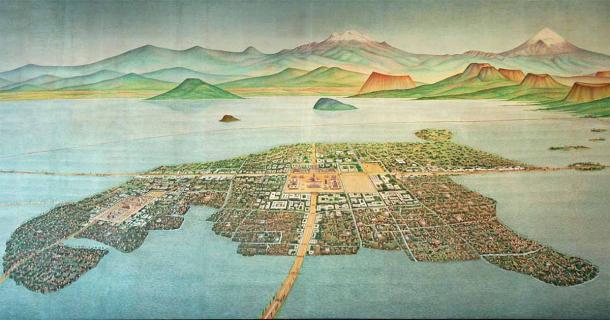
Despite common associations with human sacrifice, the Aztecs’ legacy includes profound accomplishments in empire-building and urban planning. By the time Hernán Cortés and his Spanish conquistadors arrived in Mexico in 1519, the Aztecs governed an empire teeming with millions. A pivotal moment in their history involves the Mexica, a nomadic group led by divine prophecy, which foretold their settlement upon witnessing an eagle on a cactus, eating a snake. This vision, fulfilled on an island in Lake Texcoco, marked the founding of Tenochtitlan in 1325 under the leadership of Tenoch. This event heralded the rise of the city-state that would become the heart of the Aztec Empire, nestled within a swampy landscape.
The realization of Tenochtitlan, characterized by its intricate system of chinampas, causeways, canals, and aqueducts, was a testament to the Aztecs’ engineering prowess. These innovations not only facilitated the city’s connection to the mainland but also ensured a steady supply of fresh water, transforming Tenochtitlan into a preeminent cultural, political, and economic hub in the pre-Columbian Americas. At its zenith, prior to the Spanish conquest in 1521, the city’s population is estimated to have reached as high as 300,000 individuals.
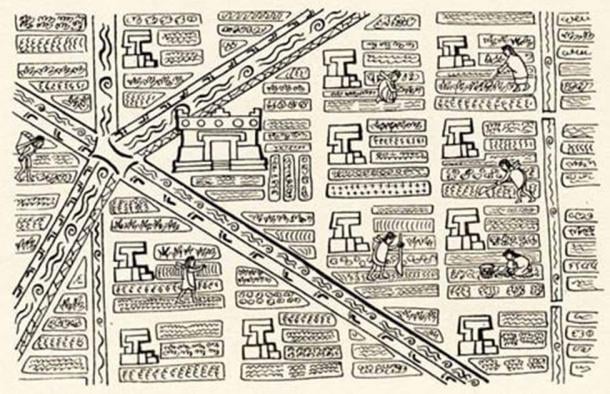
Converting a marshy landscape into productive agricultural land was an immense challenge. The exact beginnings of chinampa agriculture in the Valley of Mexico are not fully understood, yet it’s known that these agricultural innovations were practiced across Mesoamerica long before the Aztecs came to power. With the ascendancy of the Aztec Empire, however, there was a concerted effort to rapidly develop these systems. This vast undertaking likely stemmed from the urgent need to feed a burgeoning population, enabled by the Aztecs’ capacity to mobilize large groups of workers. The extensive planning involved in this endeavor is evident from the consistent size and layout of the chinampas, which is apparent from aerial surveys.
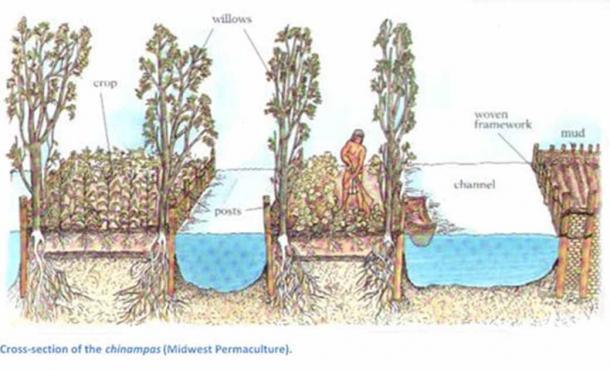
At their core, chinampas were man-made islands crafted from accumulated layers of vegetation and mud beneath the water. To construct a chinampa, a rectangular area approximately 30 meters (98 ft) long and 2.5 meters (8 ft) wide would be marked off on the swampy lakebed by driving stakes into the ground. These stakes were then interconnected with wattle to form a fence. The enclosed area would subsequently be filled with mud and decaying plant matter. This process was critical to elevate the chinampa above the water level, ensuring that the roots of plants did not become waterlogged.
When initiating the construction of an adjacent plot, which would run parallel to the first, care was taken to leave a slim canal between the two for canoe navigation. This transformation gradually turned the lake into a network of canals and islands. The canals weaving around the chinampa plots gave rise to the impression that these agricultural lands were hovering over the water, leading to their erroneous description as “floating gardens.”
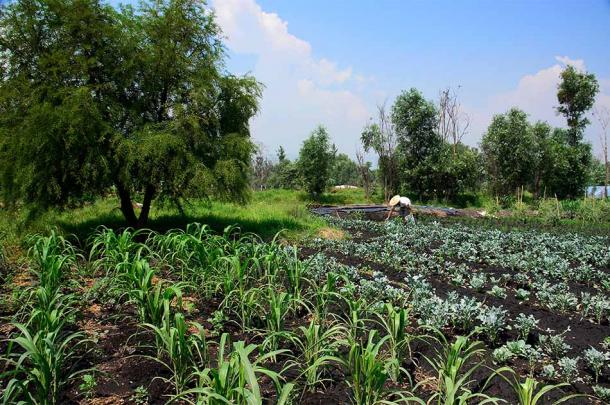
To enhance the stability of these agricultural plots, willows were planted along the edges. This strategy leveraged the willows’ dense root networks, which gradually secured the plot’s retaining walls and mitigated erosion over time.
The chinampas yielded a variety of crops such as maize, beans, chillies, squash, tomatoes, and leafy greens, thriving in these well-organized plots. Additionally, the fields were brightened with flowers that held significant importance in religious ceremonies. The intelligent use of seedbeds enabled a continuous cycle of planting and harvesting, thus maximizing the efficiency of crop production. Moreover, the surrounding canals were inhabited by a rich diversity of fish and birds, providing an extra source of food.
The ingenuity of Aztec engineering was particularly evident in their water management practices, crucial for ensuring year-round productivity of the chinampas. To combat potential flooding during the rainy season, an elaborate drainage system featuring dams, sluice gates, and canals was established.
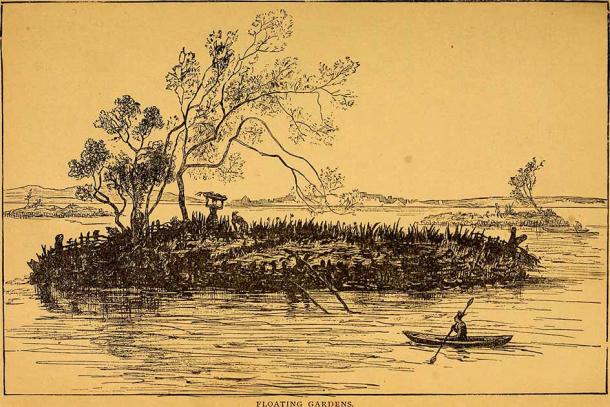
This careful regulation of water resources underscores the Aztec Empire’s methodical approach to agriculture. In contrast, during the drier seasons, it was necessary to manually sustain moisture levels. This involved transporting water in vessels from the canals directly to the crops within the chinampa plots.
Regarding fertilization methods, the Aztecs utilized human waste, transported by canoe from Tenochtitlan, to enrich their crops. This practice not only provided nutrients for agriculture but also contributed to a cleaner living environment by managing the city’s wastewater. Interestingly, there have been suggestions that Mexico City once explored developing a wastewater treatment system inspired by the Aztec chinampa technique.
The creation of the chinampas highlights the Aztecs’ remarkable human ingenuity, contradicting any simplistic portrayal of them as merely fierce warriors. Their strategic manipulation of the environment, the organized effort in constructing the chinampas, and the adept management of water resources reflect the sophistication of Aztec society. While modern Mexico City’s landscape has dramatically transformed from the wetlands of the past, reminders of this innovative chapter in history persist.
Xochimilco, now a part of southern Mexico City, serves as a cultural relic, attracting visitors to its remaining network of canals and the few surviving chinampas with brightly painted trahuneras, akin to gondolas. Despite being designated a World Heritage Site in 1987, Xochimilco faces significant threats from pollution, degradation, and urban encroachment. Presently, a mere 3,000 chinampas remain, a fragile link to a vanishing heritage, maintained by a dedicated few striving to balance tradition with the pressures of contemporary life.









